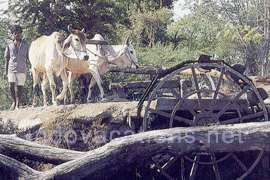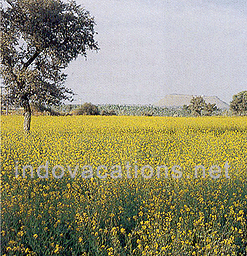
Welcome |
|
|
|
|
|
|
|
|
|
|
|
|
|
|
|
|
|
|
|
|
|
|
|
|
|
|
|
|
|
|
|
|
|
|
|
|
|
|
|
|
|
|
|
|
|
|
|
|
|
|
|
|
|
|
|
|
|
|
|
|
 |
Rajasthan is a royal land with invincible forts,
magnificent palaces, rich culture and heritage, beauty and
natural resources. In the western Rajasthan, there are
vast tracts of the desert and the ecological environment
is semi-arid, whereas in the eastern Rajasthan, there are
rivers, rains and a lush greenery is present all over and
the seasonal crops are grown in plenty. In these harsh
climatic conditions, women maintain the cattle and their
milking, while the elder or the young men take them out to
pastures for grazing and also work on the
|
|
fields.
In the past, when agriculture was a risky affair,
so it became necessary to raise cattle for
survival. This tradition has continued to grow in
Rajasthan, turning Rajasthan into one of the
states that has benefited from the ‘white
revolution’.
|
|
|
|
|
Since, most of the land holdings are not too large, so the
tractors are sometimes used at the time of sowing. Most of
the farmers use ploughing method that belongs to the
thousands of years to the Indus Valley Civilization.
Camels and buffaloes are used for pulling the plough and
the mechanized methods of farming are not used. While the
majority of farmers still wait for the rains to water the
fields, very few of them have tube wells. The water is
also sometimes trapped in the man-made ponds and is used
only for daily use and not for farming. |

|
|
Wheat, corn and
millets are the three important crops which are grown
here. The another important crop are the pulses, since it
forms the basis of the lentils required for cooking the
meals. Seasame and groundnut are also grown here which
forms the basic medium and the important source of the
cooking oil. Fresh vegetables are still not grown here,
but potatoes and tomatoes are mainly grown in the fields.
However, the waters of the canal that have reached
Ganganagar are now helping in the cultivation of citrus
fruits, including tangerines, oranges and lemons. |
|
|
|

|
Dehydrated vegetables like Sangri and Gwarphali from the
bean families, and Kakri from the cucumber family are
grown here that can be eaten fresh, or stored to use in
the later months. Most of the villagers eat these
vegetables. However, in recent years, due to transport
facilities, the availability of fresh vegetables in towns
and cities has increased.
Very few trees are now left in the towns that provide
shelter to both the farmer, and his flock of goats. A
large number of trees are not planted here as this would
tap the underground water resources, making it harder for
crops to survive. Thorny bushes with ber fruits require
little water, and can be seen in plenty in Rajasthan. The
state also has a large cultivation of watermelons, which
is the perfect way to fulfill one’s thirst. |
|
|